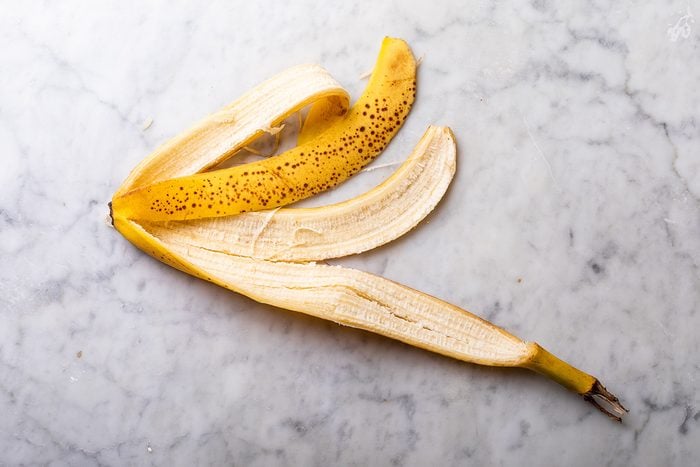Here’s What to Do with Banana Peels Before You Toss Them Out
Updated: Mar. 03, 2023

Hint: Your DIY fertilizer game is about to get a big boost.
Ah, TikTok—our source of food hacks for everything from making perfectly crispy potatoes to cutting lettuce, our go-to for fun date ideas like the Four-Course Meal Challenge, and of course, the origin of viral recipes like crunchy bread.
The video platform has really taken off during the pandemic, but our favorite section has got to be life tips that we can use around the house every day, like the one where we discovered that we have dishwasher filters and yep, they need to be cleaned. If you’ve become a plant parent during this quarantine period like so many of us, you’re gonna love our latest discovery—a way to make environmentally friendly fertilizer using plain ol’ banana peels!
Banana Peels Aren’t Just for Slipping People Up
@creative_explainedBanana Peel = Magic 🌱🤩 #garden #trick #tips #dtio #HomeCooked #foryou #fyp #learnfromme #alwayslearning #diy #magic #wow #plants #gardening #banana♬ original sound – Armen Adamjan
TikTok user creative_explained, who brought us this genius dryer sheet hack for cleaning burned pots, has now given us a great reason to eat more bananas (or bake more banana bread). According to his super-fun video, all you need to do is save your banana peels, chop them up into smaller pieces, toss them into a cup or bowl of water and mix. Let them soak for an hour (or longer, if possible), and then pour the water into your plants! This mix apparently helps both indoor and outdoor plants grow, and bonus—it’s cheap and free of any chemicals, unlike store-bought fertilizers!
How Does This Work?
Banana peels contain lots of nutrients, including potassium, phosphorus, magnesium and calcium—all of which are needed for good plant growth. Soaking the banana peels allows the nutrients to leech into the water, and once it hits the soil, the roots grab all those sweet, sweet minerals. You can soak the peel whole, but according to one commenter, chopping it up exposes more surface area, allowing more nutrients to release into the water.
And hey, if you haven’t gotten that green thumb down quite yet, these practically unkillable houseplants are a great way to start!
